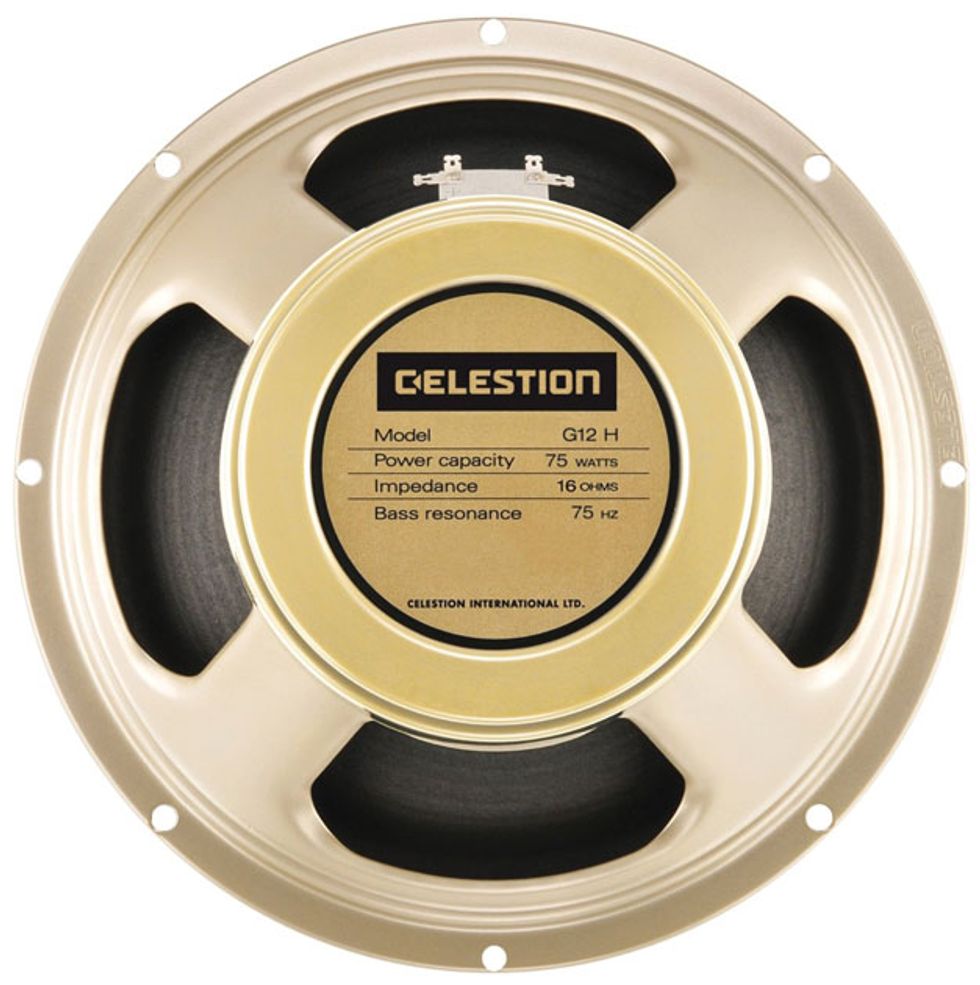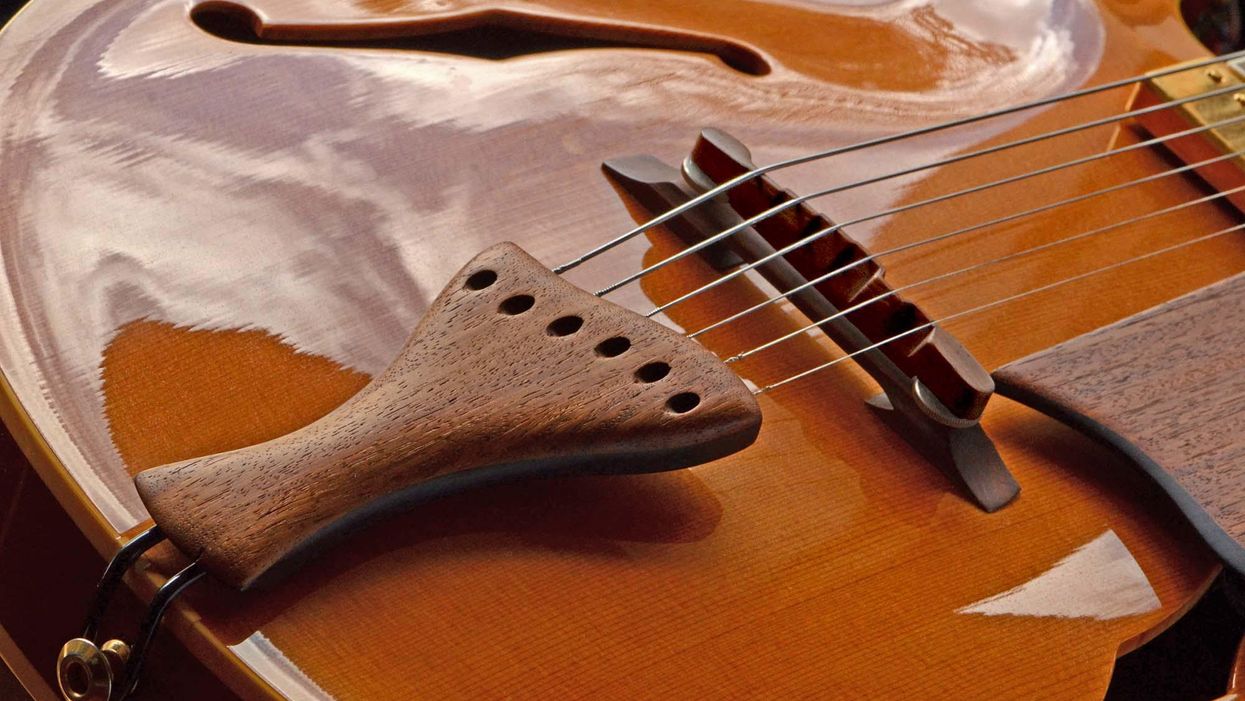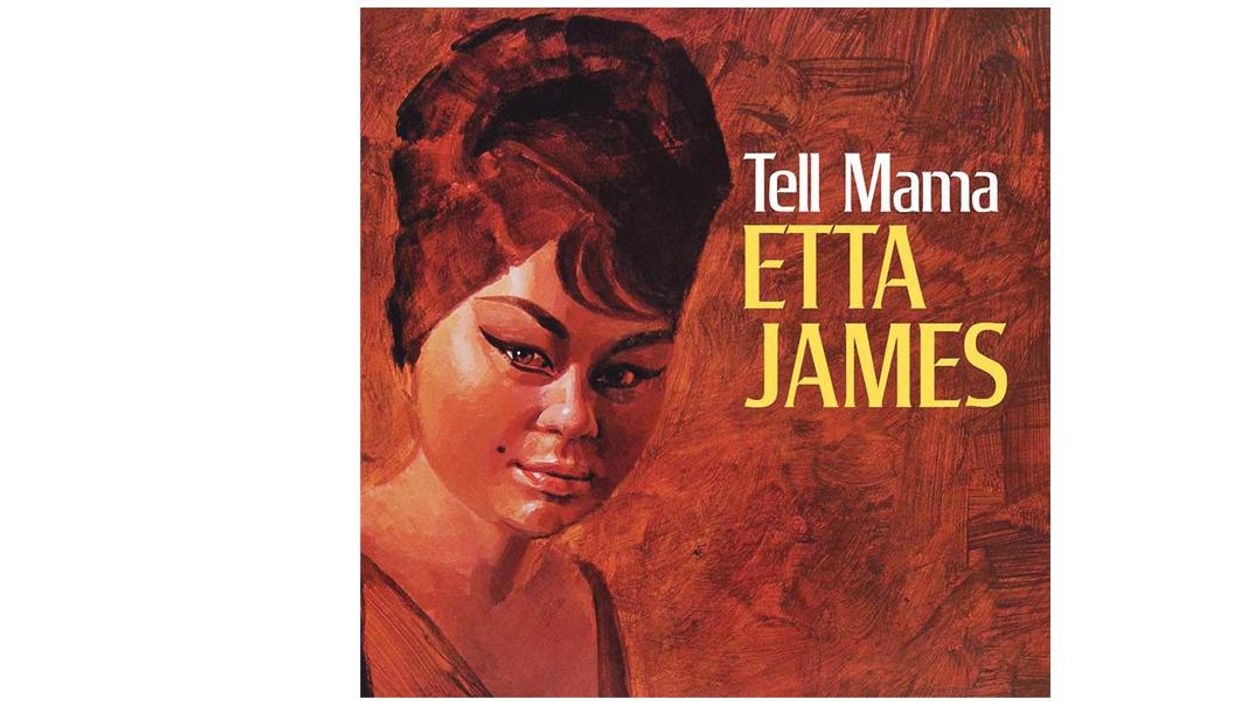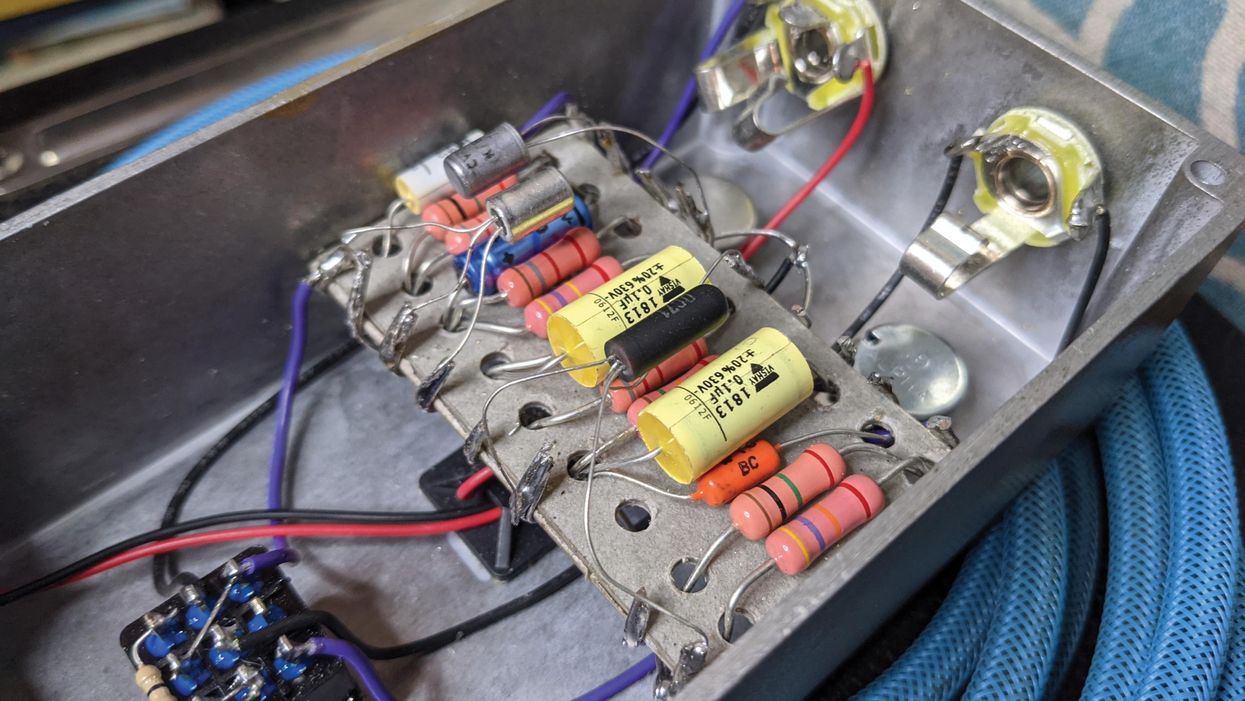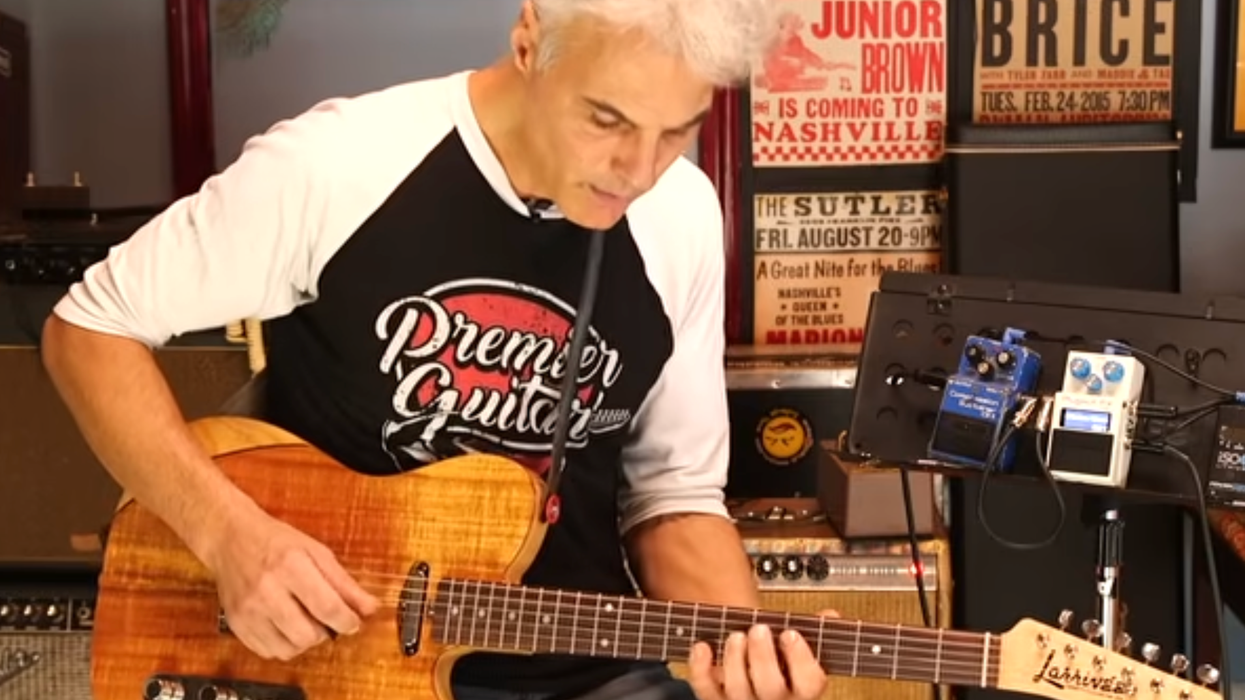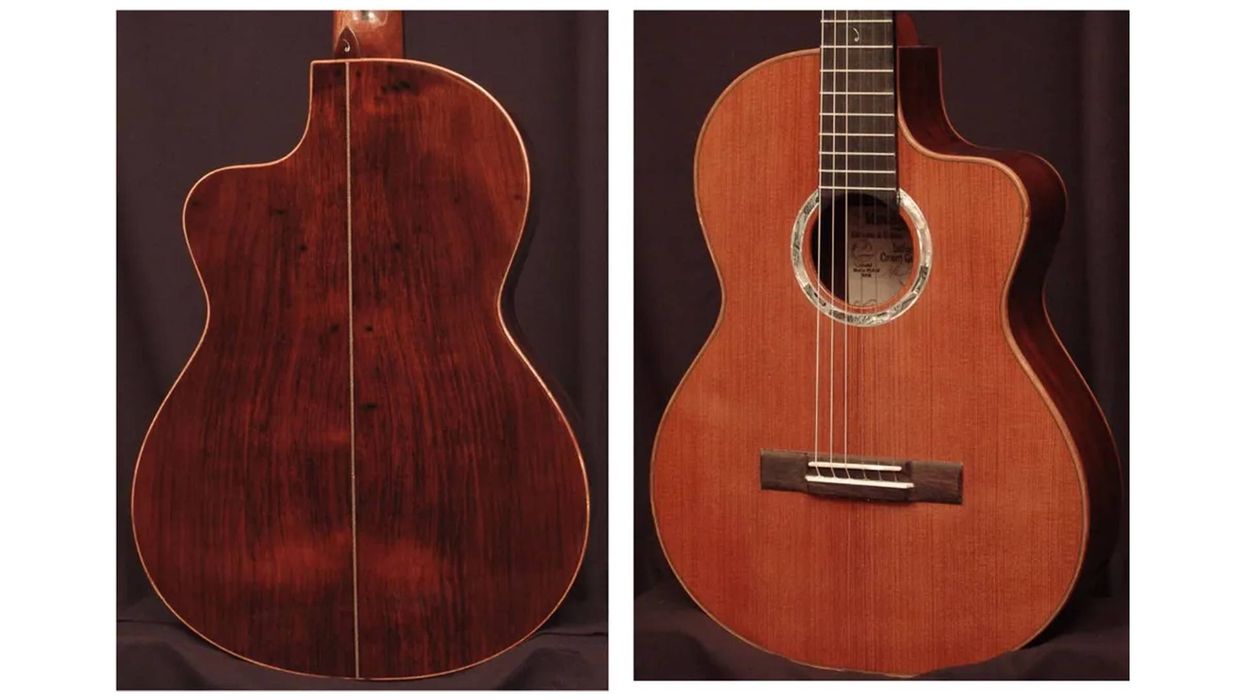Electric guitarists are always tinkering. Be it amps, guitars, pedals, or pickups: There’s seemingly no end to the tonal variables we can obsess over. But what about speakers? My good friend John Suhr once told me that speakers are like a filter—the final EQ that shapes our guitar tone. This month, we’re going to look at speakers and how they contribute to shaping our tone. I’ll mainly reference various British-style guitar speakers (since I have the most direct experience with them), and I promise to keep things in layman’s terms!
Cabinets. While my focus this month is on speakers, I should briefly touch on cabs since the cabinet you load your speakers into also has a hugeimpact on tone.
Open-back cabs exhibit an airy tone with great dispersion and chime, and are generally a great choice for clean and light-gain/distortion tones. Closed-back cabs have more punch and tighter bass response, making them great for mid-gain to higher-gain distortion tones. The type you choose should depend on your tonal end goal, yet there really are no rules. As a general guideline, you might lean towards an open-back cab if you play country, jazz, indie rock, or blues. If you play classic rock, hard rock, or metal, then a closed-back cab might be the way to go.
Magnet composition. Most guitar speakers utilize either alnico or ceramic magnets. Alnico magnets tend to be bright at low- to mid-volume levels, but sound warmer and more compressed the harder you drive them. They are a huge part of the overall tonal equation when coupled with certain amps such as early Fender tweed designs or the venerable Vox AC30. In my opinion, an AC30 doesn’t really sound like an AC30 with any speaker other than a 12" alnico Celestion, or similar variant. Interestingly, I’ve found that you can plug just about any amp into a 2x12 with Celestion alnico speakers and the resulting tone will be in the AC30 ballpark—proving the huge impact that speakers have on overall tone.
Ceramic magnets don’t compress as much at higher levels and will generally sound more even at different volumes. This could be good or a bad depending on what you’re going for. In general, they exhibit a more even-frequency response and tighter bass through a wide range of volume levels, and sharper, more-defined and less-compressed highs at higher volumes than alnico speakers.
Magnet weight. Generally, the heavier the magnet is, the more efficient the speaker will be. And more efficiency equals louder. Celestion G12M Greenback speakers have a relatively small 35-ounce magnet and produce an output in about the 96-97 dB range. G12H speakers feature a 50-ounce magnet and will generally produce 98-100 dB.
in the AC30 ballpark.
Remember: Every increase of 3 dB results in a perceived doubling of the volume level (100 dB will seem twice as loud as 97 dB), so if you’re trying to tame a really loud amp, a less-efficient speaker can help. Insofar as tone, H-magnet speakers seem to exhibit more highs and lows, whereas M-magnet types have full mids and a “creamier” midrange.
Dust caps. The “dust cap” is the part at the center of the speaker. Most guitar speakers have either two 1/4" inch dust caps, or larger 4" dust caps. Examples of Celestion speakers with smaller dust caps are the Blue, Gold, G12M, G12H, and Vintage 30 models. Some examples of speakers with the larger 4" dust caps are the Celestion G12T-75 and G12-65 models. A larger dust cap will soften and diffuse the highs, which can work great with certain bright amps or guitars with single-coils. Also, players that use heavy distortion might prefer them since they help to smooth out abrasive high-gain tones.
Power handling. My friend Jim Seavall (owner of Scumback Speakers) recommends using speakers with a total wattage rating that’s double the RMS wattage rating of your amp. So if you have an amp rated at 50 watts RMS, that means you should use a cab rated at no less than 100 watts power handling (such as a classic Marshall 4x12 with four 25-watt G12M Greenbacks). If you have a 100-watt Marshall plexi head, know that it will put out 100 watts of clean power, but it can put out in excess of 150 watts peak. You’d need two 4x12 cabs (each loaded with four 25-watt G12M speakers) to safely absorb all that power. Pick your speakers not just for tone, but also for longevity. It’s no fun blowing speakers at a gig!
Different speakers for different tones. What if you like the tone of Greenbacks in a closed-back 4x12 for distorted tones, but you dig an open-back 4x10 for clean tones? Using multiple cabs with one amp in the studio is easy, but live, it’s not so simple.
There are devices that allow you to switch between different amps and/or speaker cabinets on the fly, such as the Ampete 222 or 444 (MIDI-controlled amp and cab switchers) and the Radial Cabbone (a pedal switcher that allows toggling between two cabs using one head). Or, you can come to a compromise and find the best “all-rounder” speaker and cab. I really like the Celestion G12H-75 Creamback speakers for what I do. They sound great both clean and dirty, and can handle 75 watts of power.
Speakers are a huge component of your guitar sound, so I hope these tips help you on the path to speaker-tone nirvana. Until next month, happy speaker swapping and I wish you nothing but good tone!